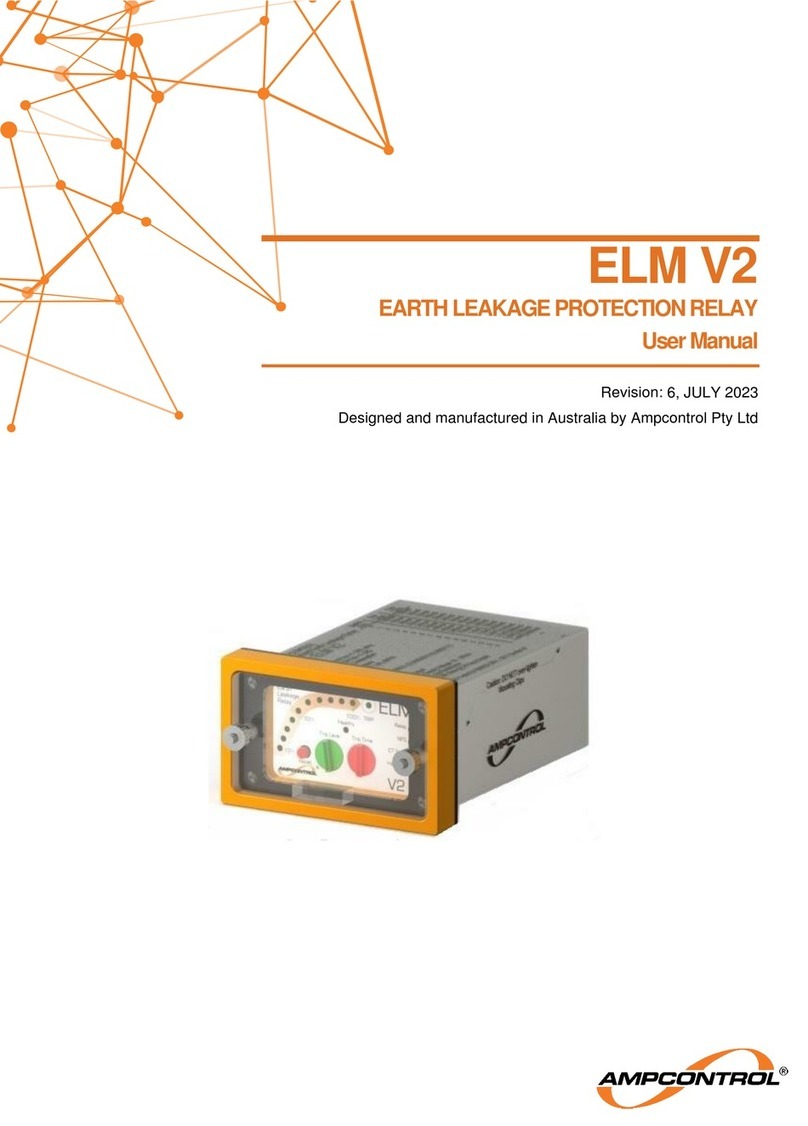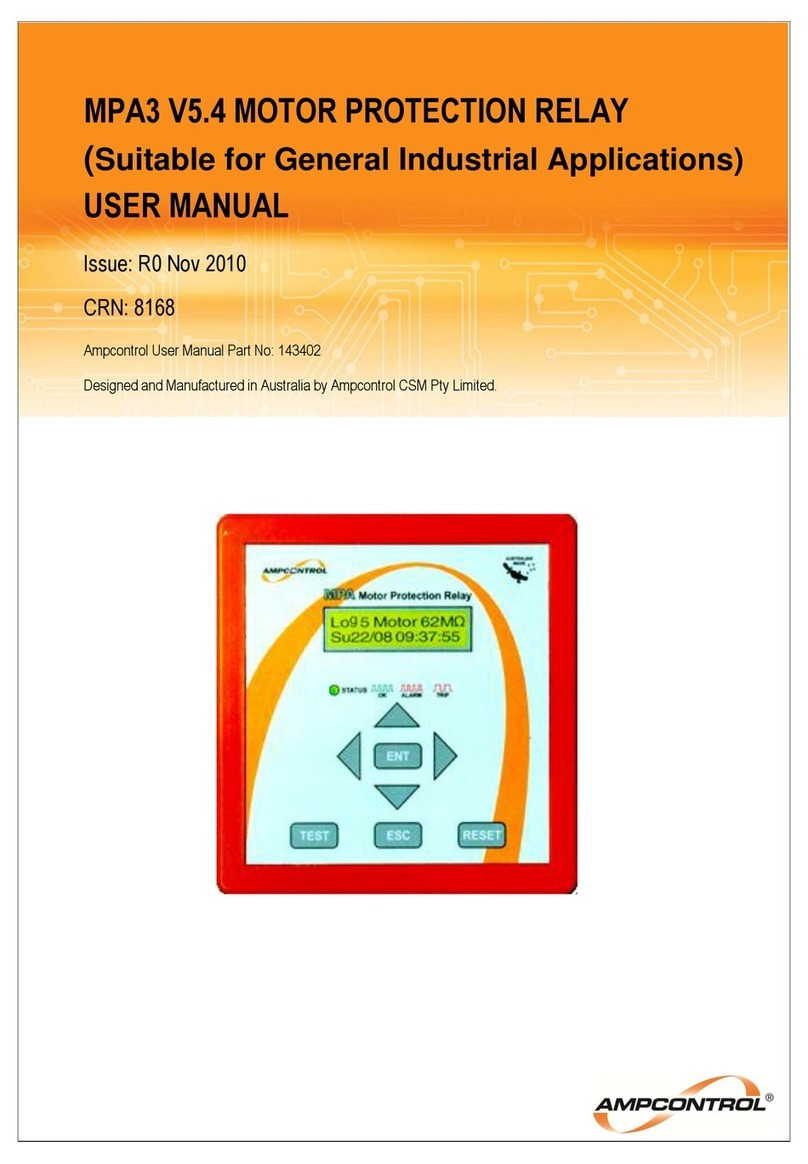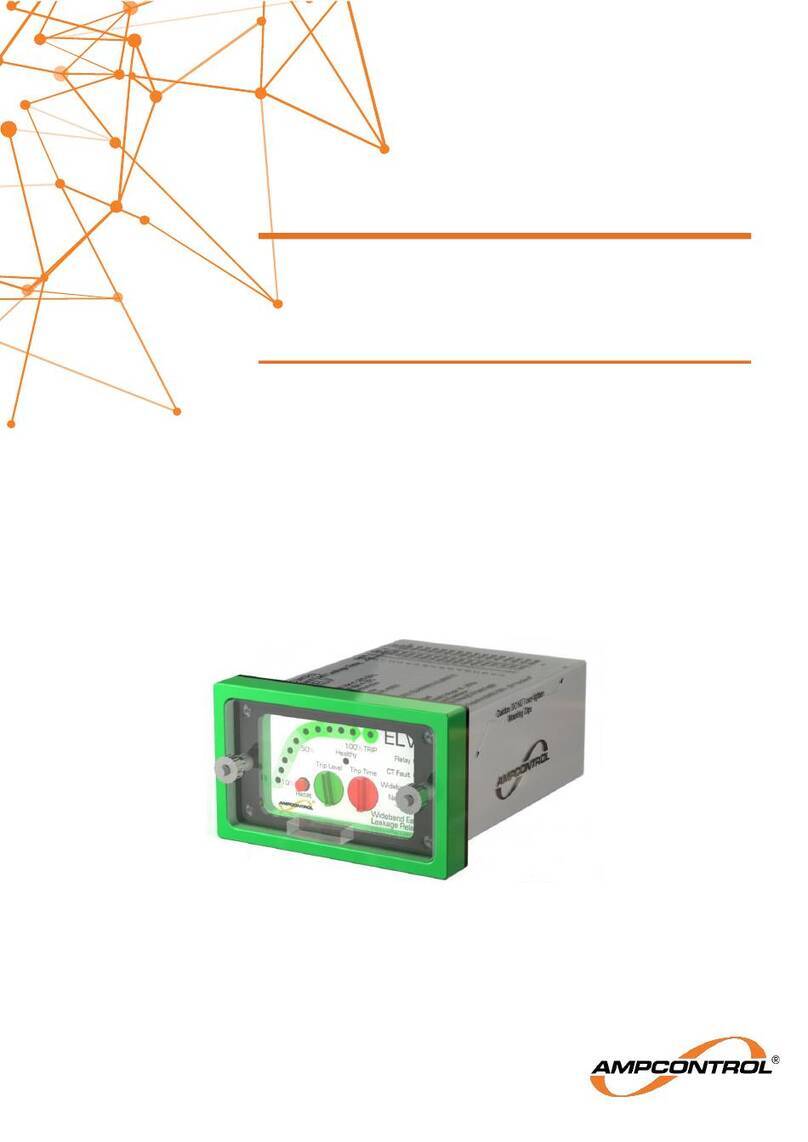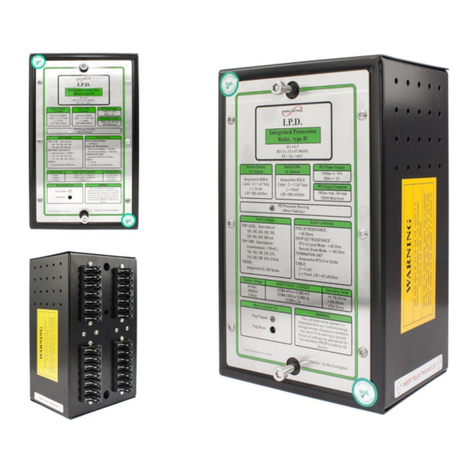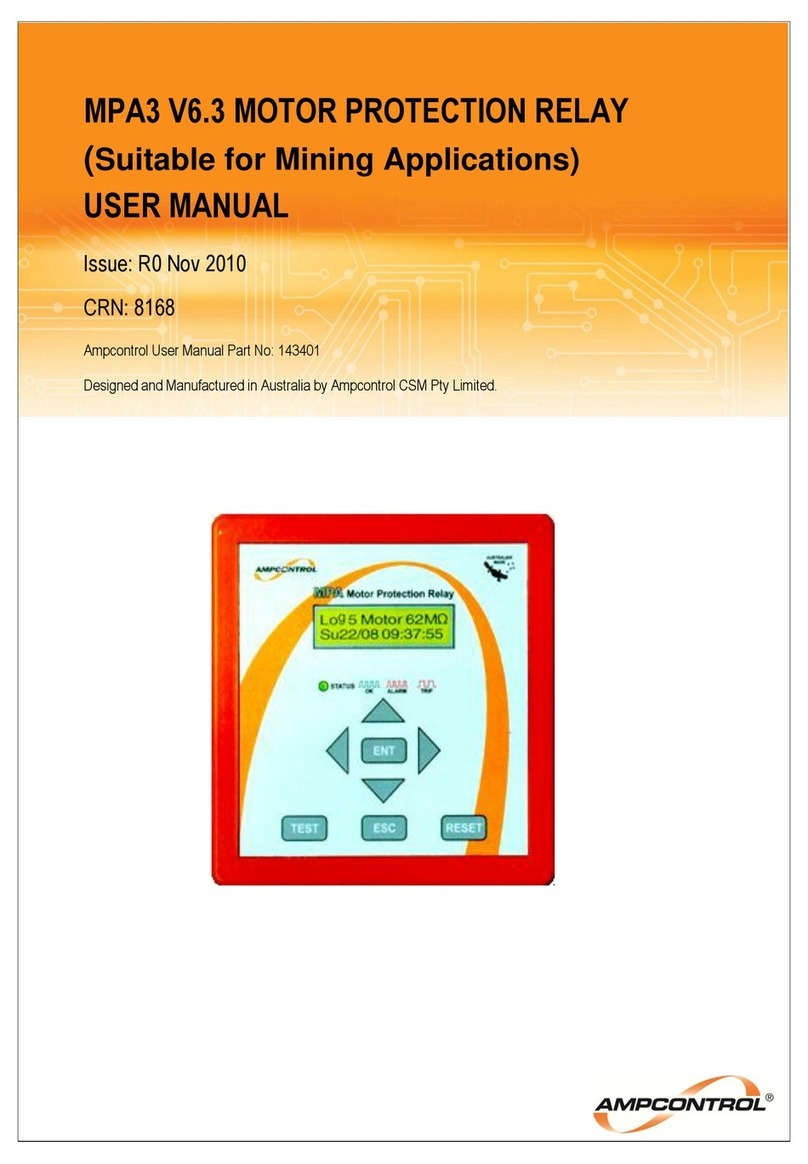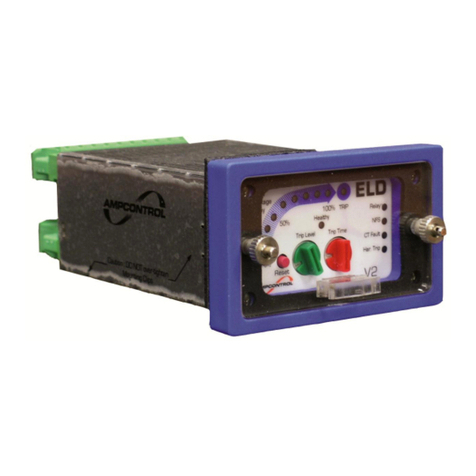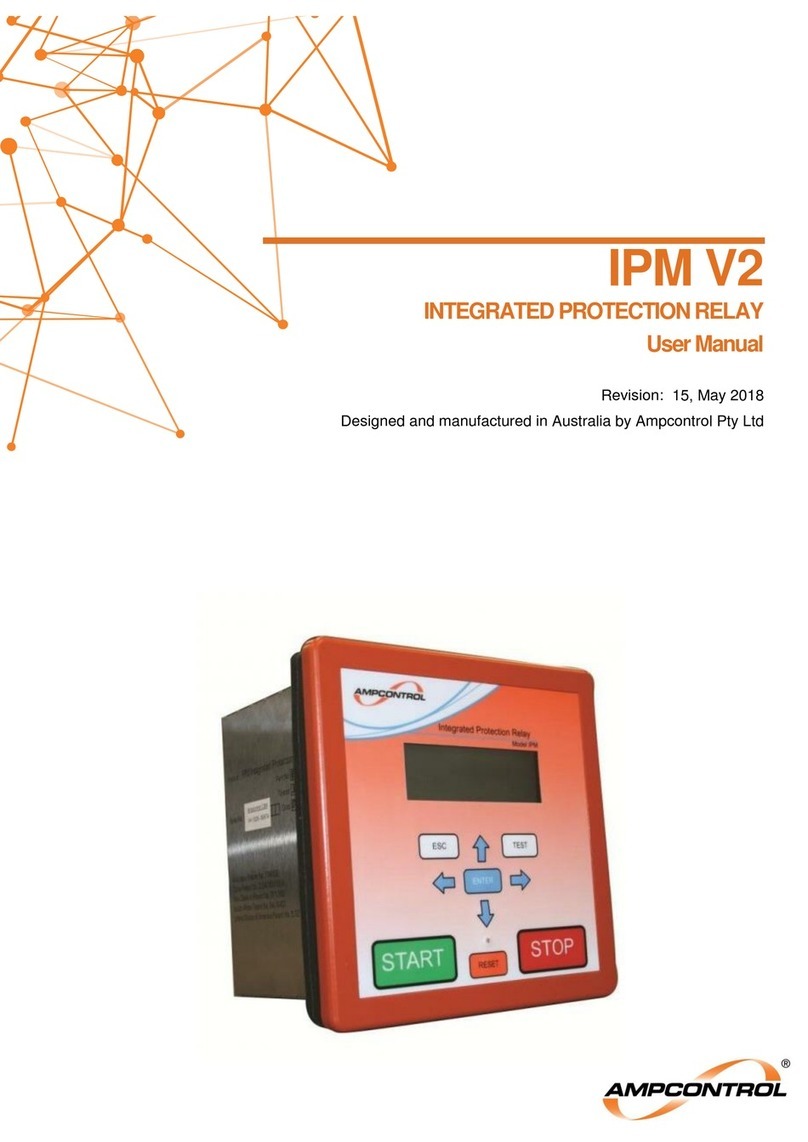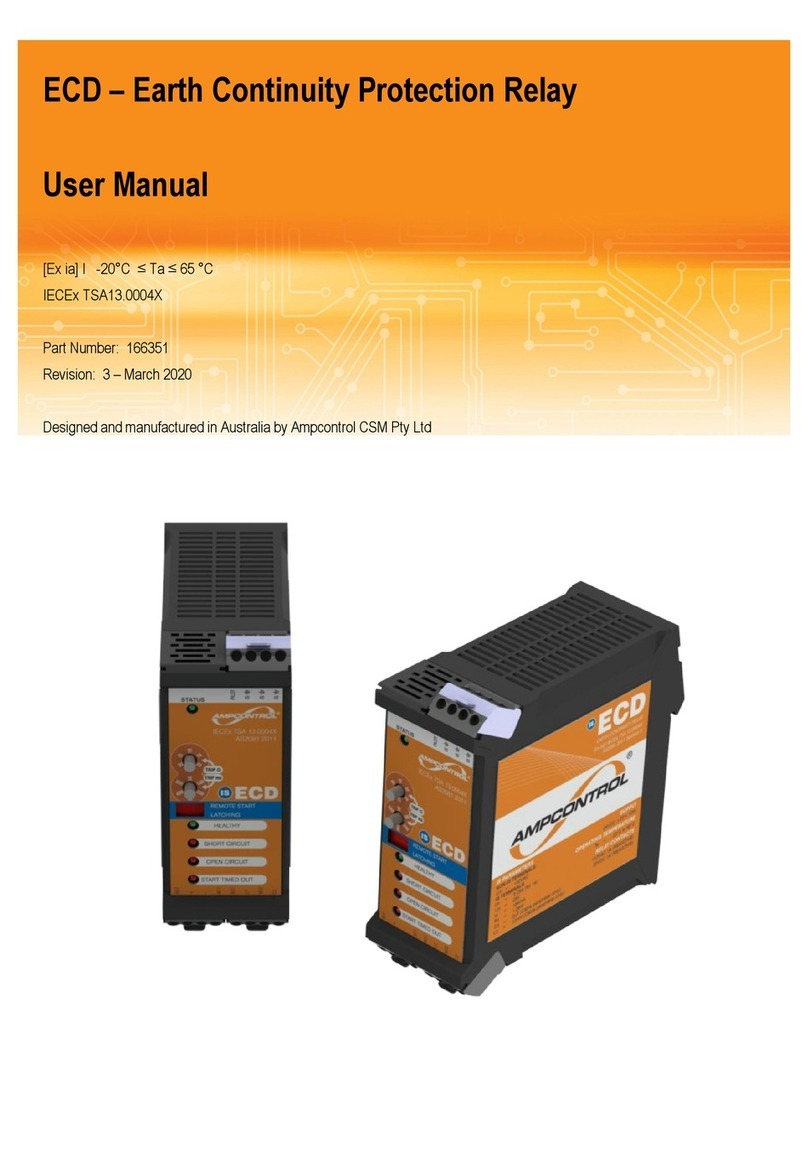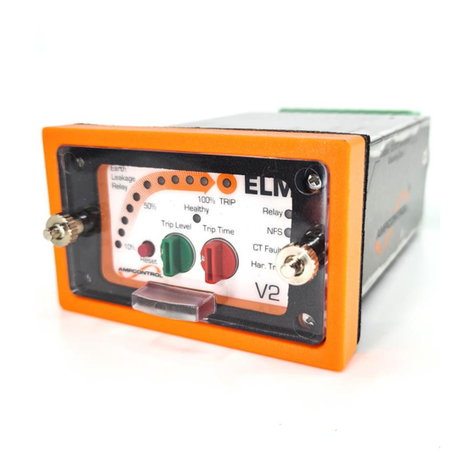3 PRODUCT OVERVIEW
3.1 Introduction
The Ampcontrol HPB Integrated Protection Relay is an intelligent protection relay based on
microprocessor technology. The Relay has been specifically designed to operate with very high
interference to the pilot conductor that occurs on cables in open cut mining operations. This is more
prevalent on a non-symmetric position of the pilot and earth conductors.
The integrated relay provides the necessary function required for protection electrical outlets supplying
draglines, shovels, drills etc. All of the protection functions are combined into a compact, plug-in unit,
which can be easily changed out to minimise down time in the event of a problem with the relay.
The HPB Relay can provide machine communication through the use of a HPB Termination Unit (HTU-
1) connected between the pilot and earth at the machine end of the trailing cable. Through the use of the
HTU-1 Termination Unit the relay parameters are automatically uploaded from a remote machine when a
cable is inserted into a power outlet.
The relay can perform an automatic “H.V. Insulation” test on the cable prior to the closure of the main
contactor. The results of the test are displayed on the HPB Display Module (HDM-1) and can be
remotely monitored.
The HPB Relay has 5 digital inputs, which feed into a microprocessor unit. The microprocessor has been
programmed to control three output relays. Relay MCR for the main contactor and Relay CBR for the
circuit breaker. RL3 is used to control the supply to the Cable Connection Module enabling it to perform
the Earth Fault Lockout test. All of the tripping logic and outlet control is performed by the
microprocessor, so that only minimal external control is required. See Typical Connection Diagrams
HPBE006 and HPBE013, in APPENDIX A: DRAWINGS.
Extensive information display and monitoring features are included to facilitate fault finding and system
trending. This information can be read locally on the HPB Display Module (HDM-1) or remotely via a
communication link.
Opto-isolated outputs are available for connection to optional LED or Relay Modules to provide
additional “run” and “trip” indications (See Drawing IPAS005, in APPENDIX A: DRAWINGS). The
Ampcontrol Relay Output Module (ROU) enables these indications to be interfaced with a PLC (See
Drawing IPAA031, in APPENDIX A: DRAWINGS).
There are currently two HPB models available; the HPB 6.6kV, which is suitable for 6.6kV systems, and
the HPB 22kV, which is suitable for 11kV and 22kV systems.
Protection Functions
Earth Leakage Protection
Earth Fault Lockout Protection
Earth Continuity Protection
Over-Current/Overload Protection
Short Circuit Protection
Contactor Fail Protection
Protection trips are stored in a non-volatile memory requiring a rest function before power can be
restored. This remains the case even if a power down occurs following a trip condition.
